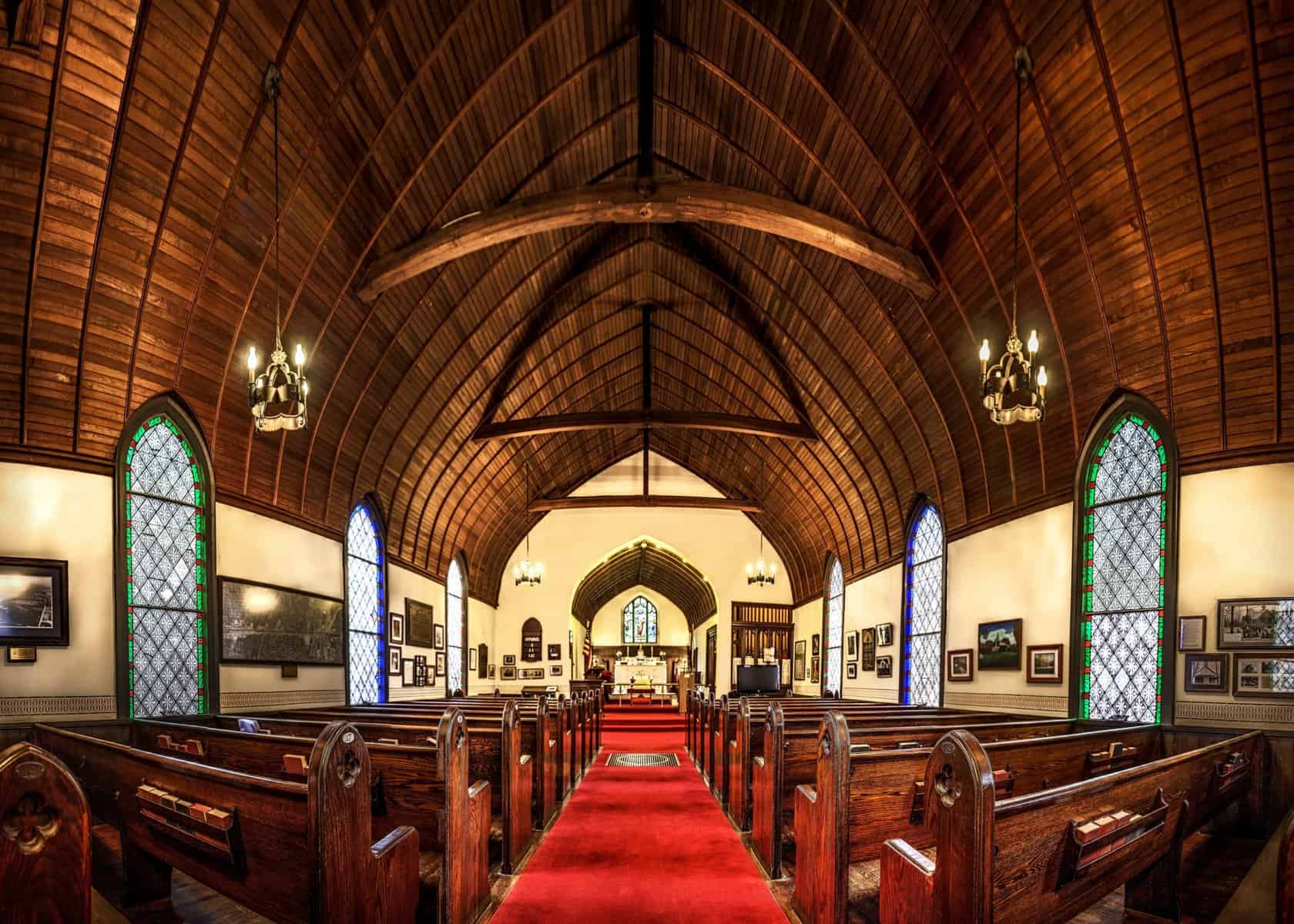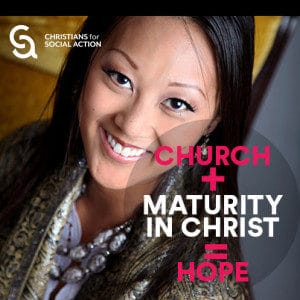 When I replay the horrific events that resulted in the murder of George Floyd, what looms largest for me are his last words. He cried out for his mama.
When I replay the horrific events that resulted in the murder of George Floyd, what looms largest for me are his last words. He cried out for his mama.
I try to imagine George’s mother raising him in the Third Ward, a place in Houston known for high crime, civil rights abuses, destitution, and economic segregation; a neighborhood where, in 1970, a cop positioned on the top of a church assassinated the 21-year-old black activist Carl Hampton, who was working to stop police brutality in the area. I think about her growing up in a shack without plumbing in North Carolina during the South’s notorious era of segregation. I think of George’s grandmother, who had her first child at the age of 13, and his great-grandmother, who gave birth to 22 children while married to a former plantation slave. When I think of George Floyd and what happened to him, I start in 2020 but find myself working backwards, because I can’t process his experience without accounting for the gravity of his family’s history of struggle, pain, and trauma—a history that includes women offering hope, resilience, and love.
George Floyd’s last words were for them. He called for his mama. His grandma. His great-grandma. He died, crying out for their strength.
I think about the laws and economic policies that were in place as George’s mother carried him in her womb. About the food she ate to help her child develop, and the jobs she took while pregnant—like working in the tobacco fields for $2 a day. I think about her limited housing and educational options. I wonder what motivated her decision to leave her small southern town in North Carolina to raise her son amid the destitution of Houston’s Third Ward. Was it because her own sister had been told she couldn’t study law “because she was black”? Perhaps she hoped that a different place might offer opportunities denied in her hometown. And I think about the church that she might have brought George to upon arriving in the Third Ward, praying for the life and future of her beloved son. Was it the same church that held the cop who gunned down Carl Hampton 50 years ago?
Yes, I think about that church….
I am a New York City educator at a last-chance alternative high school serving youth aged 16-22, most of them highly traumatized. Many of my students are homeless and/or recently incarcerated, have babies of their own, and have now become the primary caretakers in their families as their loved ones get sick and die from COVID. I’m still teaching them remotely, texting them daily, sharing articles, jokes, memes, music, stories, and ideas with them. When Ahmaud Arbery, Breonna Taylor, and then George Floyd were murdered, my students became militantly angry. They are exhausted from getting pushed down by people they see, like cops, and things they can’t see, like the criminalization of poverty.
At first, when the protests began, I begged my students to stay indoors, as I’ve been doing throughout this COVID season, if not for themselves then for their older relatives with whom they live. Our conversations moved to heated debates about how to take appropriate action from their couches. But their anger could not be contained, so our conversations evolved into how to best protect themselves as they peacefully demonstrated. My students are justifiably angry and scared and filled with stories of so much police brutality that we could quickly compile an encyclopedia. The police are the easiest to blame, because they are what’s most in their face. But as with George Floyd’s death, I think what propelled my students to take action and join the protests in the streets reaches much further back than police brutality. How did my students end up in my alternative school, in my class, to begin with?
Here’s how: When kids in America turn 5, they start kindergarten. However, their experiences on how prepared they are for this can look very different. My Battery Park neighbors in NYC are millionaires. When their kids start kindergarten, many will have benefited from fancy nursery schools and already know how to read and write. Children as young as 2 can be enrolled, like Katie Holmes’ daughter, Suri Cruise, in Avenues World School for $56,000 a year. Parents can also hire a private preschool consultant to work with their infants, with the promise of gaining admittance to the competitive “baby ivys,” like Horace Mann Nursery school, which costs $48,000 a year.
Early educational performance dictates later life successes.
Why would someone spend so much money on their 2-year-old? The research is clear. Early educational performance dictates later life successes. One of my students, let’s call him Bobby, didn’t even know what a book was until a kindergarten teacher opened one up on the first day of school. It’s all too likely that a teacher observing a kid like Bobby, squirming on the reading rug, will incorrectly infer that Bobby is “dumb” because he wiggles and doesn’t understand what reading aloud is all about. The teacher might start to correct Bobby’s behavior in an effort to make him focus. Consequently, Bobby may start acting out, embarrassed by the negative attention he’s receiving from the teacher. Unbeknownst to him, Bobby is already on the cradle-to-prison pipeline.
Since no one ever read to him, Bobby starts school three years behind grade level, while a kid like Suri Cruise starts two years above grade level. Each year, kids typically advance one grade level. However, 75% of students who start below grade level never catch up to their classmates, and this has a lifelong impact. The highest performing students have an 81% chance of going to college and only a 6% chance of dropping out of school. But a kid like Bobby has less than a 2% chance of going to college and a 55% chance of dropping out of high school. If Bobby drops out, he’s out on the streets having to find ways to support himself. One in 10 male dropouts between the ages of 16 to 24 are either in prison or in juvenile detention. According to a report by The Hamilton Project, there is close to a 70% chance that an African-American man without his high school diploma will be imprisoned by his mid-30s.
And again, I think about George Floyd. And his mother. And the church…..
If I were a pastor and had George Floyd’s mother in my church, I would know she was working hard to put food on the table for her son. I’d know she didn’t have the time or resources to provide early educational interventions to her son. I’d know that her son might spend most of his academic career just trying to catch up. And I’d know she was trying but needed some help. The George Floyd mothers of this world need the church’s help.
If I were to ask my congregants to come together and provide free childcare for George’s mother, infused with heavy early learning instruction, I would be doing my best to help young George start kindergarten ahead the game, not behind. This is one concrete way that churches can play an essential role in providing some equity to economically disadvantaged kids.
The pandemic is offering another way, because churches are perfectly positioned to help students of all ages in this unique and trying season. Over the last few months, school leaders have been grappling with the reality that we can’t simply dump 30 kids back into the classroom and practice social distancing at the same time. There’s just not enough physical space. Many schools have opted for a hybrid model of education, where some students come into school for face-to-face instruction while others engage in online learning. But accomplishing this presents a real challenge, especially for kids who don’t have internet access at home. This is where churches come in: church buildings are the largest unoccupied real estate spaces in communities, especially Monday through Friday. While this pandemic lasts, churches can partner with the education community to provide additional space where students can come, spread out safely, and engage in online learning while other students go to their traditional schools for face-to-face instruction.
Churches are perfectly positioned to help students of all ages in this unique and trying season.
On a quiet Sunday in LaGrange, Georgia, in June, a rainbow coalition of clergy came together to seek ways to heal the racial discord that’s currently tearing apart our nation. Troup County churches want to shape the narrative around housing justice, criminal justice, elderly care, food assistance, healthcare, and educational reform. Led by Mayor Jim Thorton, Chief of Police Lou Dekmar, and Pastor Iris Lovelace, community members gathered to pray and to affirm their commitment to bringing healing and equity. Also at this gathering, members of the local school board expressed interest in partnering with churches to engage in a hybrid learning model, a model that deserves to be highlighted and scaled across the nation.
Last year, a 19-year-old student of mine named Sebastian, a 6’3″ muscular, Latino teen, walked into my classroom with a big slash on his bruised cheek. He is a special needs student with the emotional intelligence of a fifth-grader. Although he can look intimidating, he’s actually a gentle giant. But cops don’t know that. They just see a big guy in a hoodie, sagging pants, his red durag wrapped around his head, lumbering down a Bronx sidewalk in the evening, as Sebastian tends to do.
“What happened?” I asked, dismayed.
He grinned and said, “Oh, those cops. I got arrested again.”
“Arrested?” I steeled myself for yet another harrowing tale, all to common among my students.
“Well, my Ma wanted me to get her a drink from the bodega. When I was walking back, the cops told me to stop,” Sebastian said.
This happens very, very often, much more than the NYPD cares to admit—stopping kids like Sebastian without reason as they walk home.
“So, what happened?”
“Well, I started running. Miss, I hate cops.”
Cops make my students so nervous that their hands shake visibly when officers are around. They and their loved ones have had so many negative experiences with law enforcement that they are traumatized and understandably scared. So when cops ask them to stop, they often run, guilty or not.
“Sebastian, why did you run?” I asked him. “You know we’ve talked about this.”
“Yeah, Miss, I know. But ahead of me, I saw a church,” Sebastian said. “So I ran as fast as I could over there. I was trying to get in the door when the cops tackled me, stepping on my face as they arrested me. But it’s ok, they let me go a couple of hours later.”
At this point, there is so much wrong, I don’t know where to begin. “Sebastian,” I asked, “why did you run to the church?”
He smiled that wide, innocent, unaware smile he has and said, “Well, Miss, I thought if I could get to the church, it’d remind the cops that I, too, am a child of God. Then they’d be less likely to shoot.”
Sebastian expected the church to make a difference in how he was treated. Do we?
Churches are faced with a real opportunity to offer a safe and equitable place for education in a pandemic season that has only added to the burden of Americans on the margins. Will we respond to this moment?
After serving with the Peace Corps in Madagascar, Erin Srivastava returned to the States and completed her Masters in English Education at Columbia University’s Teachers College, specializing in teaching at-risk students. Currently, she teaches at JVL Wildcat in Manhattan, a charter school focused on providing education to students who have been suspended from traditional schools, are often homeless, and/or recently incarcerated.


